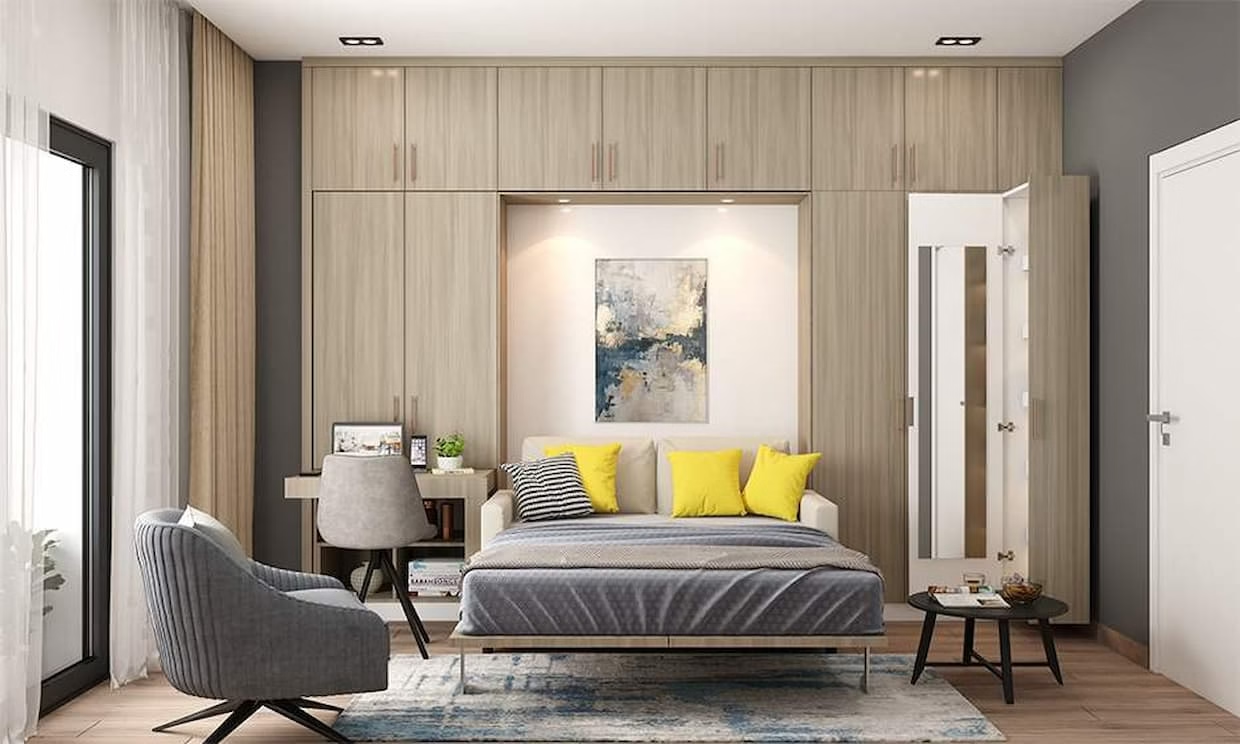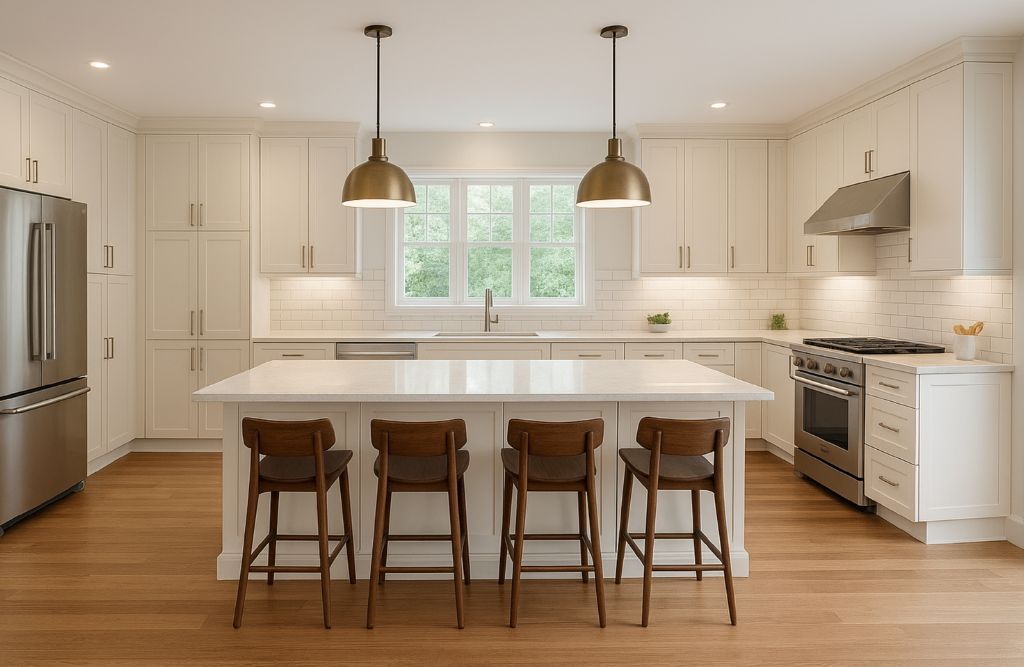You don’t have to spend all your money on a home makeover. Though it may look like you need to be a millionaire on your Pinterest board or glamorous magazine, you can achieve a professional result on a budget—the key is to know how to be resourceful and strategic while making smart design decisions; and whether you are renovating one room or your entire home, you can achieve your vision without going broke.
In this guide, we will examine some practical pathways to renovation and decorating like a pro while saving money; and how construction companies could achieve a big impact without the financial strain.
1. Start with a Clear Plan and Budget
Pros at Design and Renovation never go ahead without a plan…and neither should you! To get started, note down all your renovation ‘big ideas’, list all your renovation intentions including some goals and set some firm priorities for where you will spend, and where you are willing to save rather than compromise.
Pro Tip:
- Make a mood board first to reference your style.
- Try out free online tools, or apps such as RoomSketcher, to document your design layout and colour selections.
- Plan on spending at least an extra 10% for unforeseen reasons (there always is a reason).

2.Focus on High-Impact, Low-Cost Changes
Sometimes you don’t need to do a major overhaul to make a dramatic change. Some renovation updates have the biggest bang for very little buck.
Paint: A new design colour is an instant mood change for your space.
Lighting: Replacing out-dated light fixtures with stylish designs and low-cost fixtures will alleviate your burden.
Hardware: Modern cabinet handles or door knobs can make the biggest change in your kitchen or washroom without having to replace all the cabinetry.
Textiles: Adding curtains, rugs, and cushions can add warmth and style on par with structural change with much less cost.
3. Shop Smart: Second-Hand, Sales, and Surplus
Many professional renovators have a knack for finding great items in the most unexpected places—and you can do this too!
Thrift shops and flea markets: Unique pieces of furniture for a great price.
Clearance sections: Tiles, flooring, and lighting that are at the end of lines that you can get for a steal.
Online sites: Facebook Marketplace or OLX, especially for secondhand items that are in very good condition.
Construction surplus: Some amazing deals on wood, fixtures, or even reclaimed bricks.
4. Learn DIY Basics
I’m not asking you to be a master carpenter, but if you can do some basic DIYs you will save yourself hundreds if not thousands.
Here are a few (mostly very safe) things you can try:
- Painting a wall or ceiling.
- Installing a shelf or curtain rod.
- Removing and replacing a light fixture (with electric understanding.).
- Installing peel-and-stick flooring.
Pro Tip: Youtube tutorials can be as useful as taking a short course offering, but without the cost.

5. Mix High and Low Design
Many designers will mix down to earth/finds or pieces with high investment items. This way you preserve style without over-investing.
Example:
- Buy an exceptional sofa that will last for years, then purchase low-priced coffee tables from Walmart or IKEA.
- Buy quality kitchen countertops, but buy budget cabinet doors and update them with nice handles.
6. Repurpose and Upcycle
Renovating like a pro means more than just shopping for the new—it’s about looking at your existing interiors with fresh eyes and seeing the potential for renovation.
Some examples are:
- Turning a set of old doors into a rustic dining table,
- sanding and repainting old cabinets instead of replacing them, and
- using leftover tiles from the last renovation to create a mosaic backsplash.
- Renovating this way will save you money, and give your home character.
7. Timing is Everything
- If you’re hiring help or buying large items the timing of your purchase will directly impact the final price you pay.
- Shop Off-Season: Furniture and appliances are regularly discounted at the end of major holidays.
- Book the construction work in down months; contracting trades people offer better rates during non-peak months.

8. Don’t Overlook Small Details
Professionals never forget that it is often the detail which makes the design work. You may be on a limited budget, but sometimes a small investment in new products can make the difference in your finished renovation.
Consider adding:
- a statement switch plate,
- decorative trim and or molding, and
- matching hardware finishes through the rooms.
These types of extras are what really give the feel of design to a space.
9. The Role of Construction Companies in Budget-Friendly Renovations
Although DIY jobs are often very fun and rewarding, there may be times when it makes sense to take advantage of the expertise of a professional, especially for structural changes, plumbing, or electrical work. Here is how a construction company can actually help you save money in the long run:
Correct Cost: A contractor should give an itemized estimate including the costs of the materials and labor broken down so that you avoid overpaying for anything.
Supplier Discounts: Many contractors, especially larger companies have trade accounts, which means you will save by getting wholesale prices on materials.
Project Management: Professionals will schedule work and labor resources while also managing subcontractors, which can save you on not only unwanted delays but on additional costs too.
Quality Work: Professionals have a clear experience and knowledge base as to when work is acceptable and good enough, again reducing the risk of making costly mistakes to fix afterwards.
Creative Solutions: Because they have seen the best materials and layouts to achieve a client vision, experienced contractors can recommend alternatives that reduce costs while bridging your ideas.
Having to hire a construction company does not always mean the cost will be higher, it lessens the likelihood of that while making it more likely the job is done correctly the first time and in the end that will be less expensive.

10. Prioritize Energy Efficiency
Smart renovators are not just thinking about updates for aesthetic value, but value in the future. There is value in energy efficiency such as:
- LED’s
- Double-glazed windows
- Low flow taps/toilets
- Increase insulation values
11. Break the Project into Phases
If your budget cannot handle a full renovation project, consider completing it in pieces or phases. Professionals do this all the time with large projects to leave you with the benefit of spreading costs out over time while minimizing the disruption of pieces of the project at a time. You can plan your phases strategically so you tackle the structural or functional changes first and aesthetic changes last.
12. Keep Your Style Consistent
The biggest budget mistake is buying the sale item and whatever ticks boxes. The professional approach is keeping an aesthetic. Pick your core color palette and design style – Scandinavian minimalism, rustic farmhouse, or modern glam, and then make sure everything fits into that aesthetic.
13. Avoid Common Budget Renovation Mistakes
- Neglecting hidden costs like delivery fees or disposal of waste.
- Not taking the time to shop around and compare like for like.
- Poor measurements (nothing worse than buying furniture you can’t return).
- Trendy finishes that will date quickly, meaning you will be updating sooner than you thought.

Conclusion: Your Dream Home, the Smart Way
You can renovate and decorate professionally without spending like a professional. If you plan carefully, mix high and low elements, develop some basic DIY skills, and know when to hire professionals, you can renovate and decorate your house without going over budget.
Construction companies provide a valuable service by turning your ideas into a professional execution. Construction companies will typically save you money by doing the work efficiently, by being able to access supplies, and by providing quality workmanship.
By teaming your resourcefulness and ingenuity, and the construction company’s food skills, you can have a stylish, functional, and uniquely personalized space without the hang over of a huge bill.
A dream home is not about what you spend; it is about what you are able to create as a manifestation of your ideas. You are well on your way to creating just that! Proceed in the ways discussed above.











